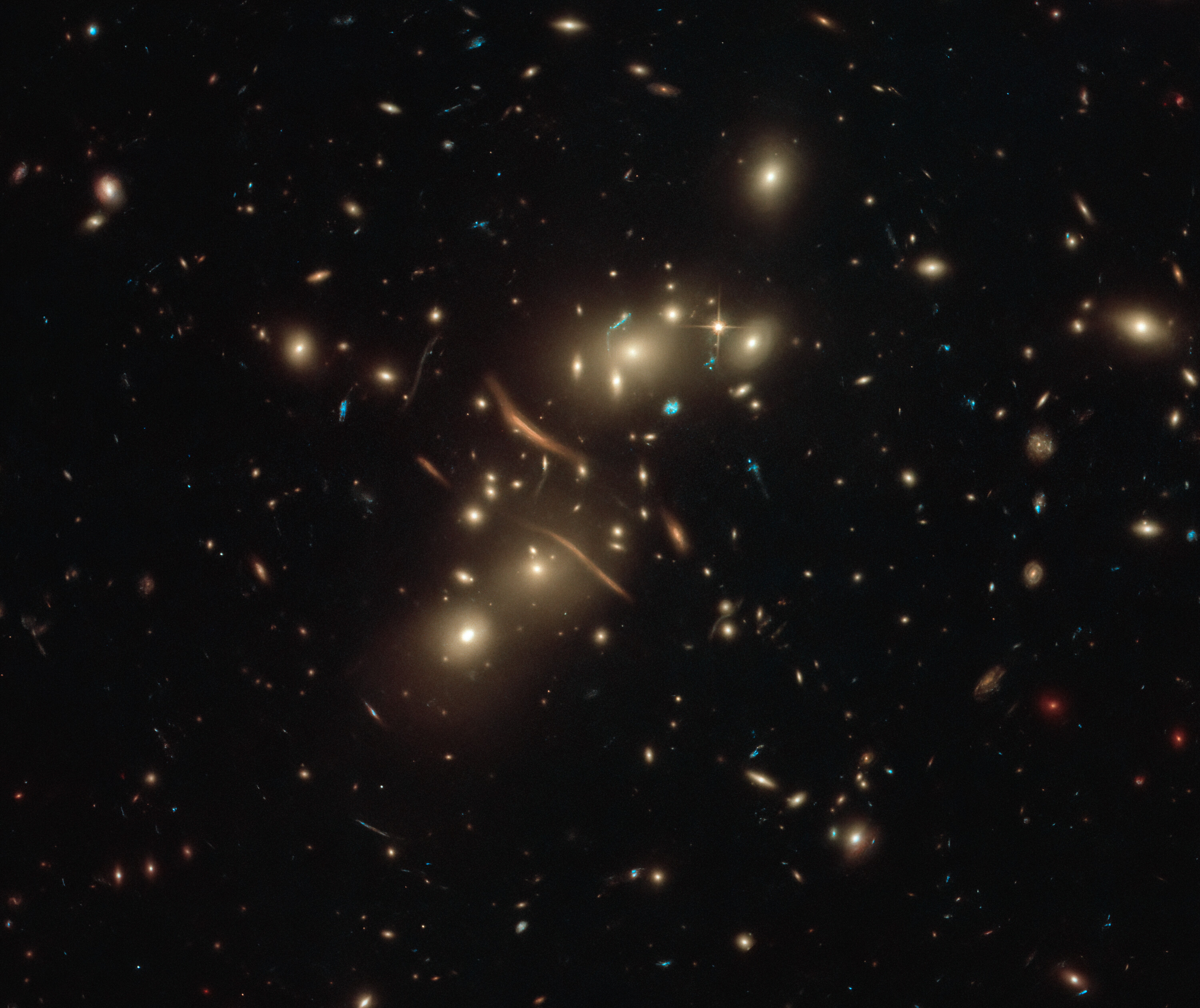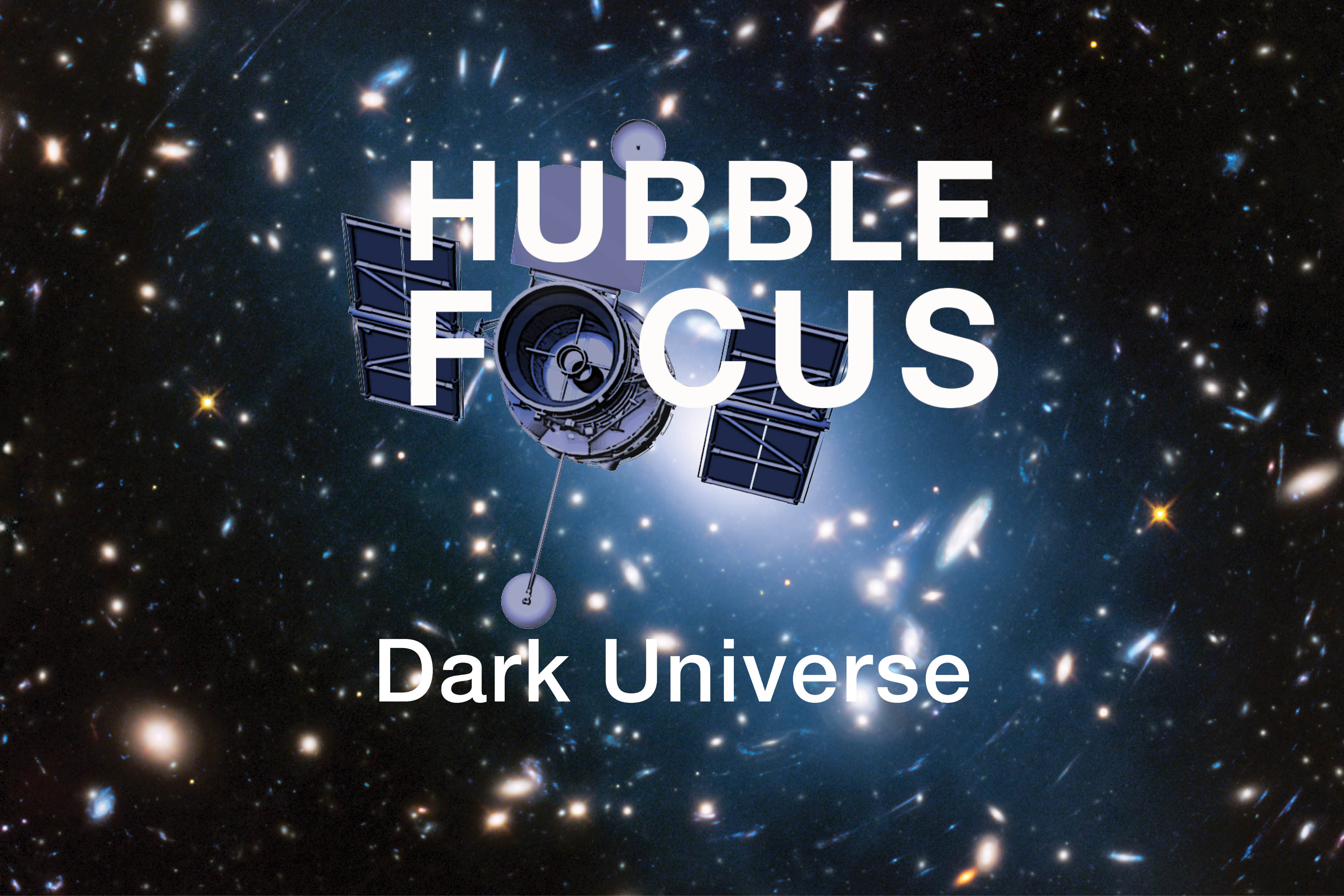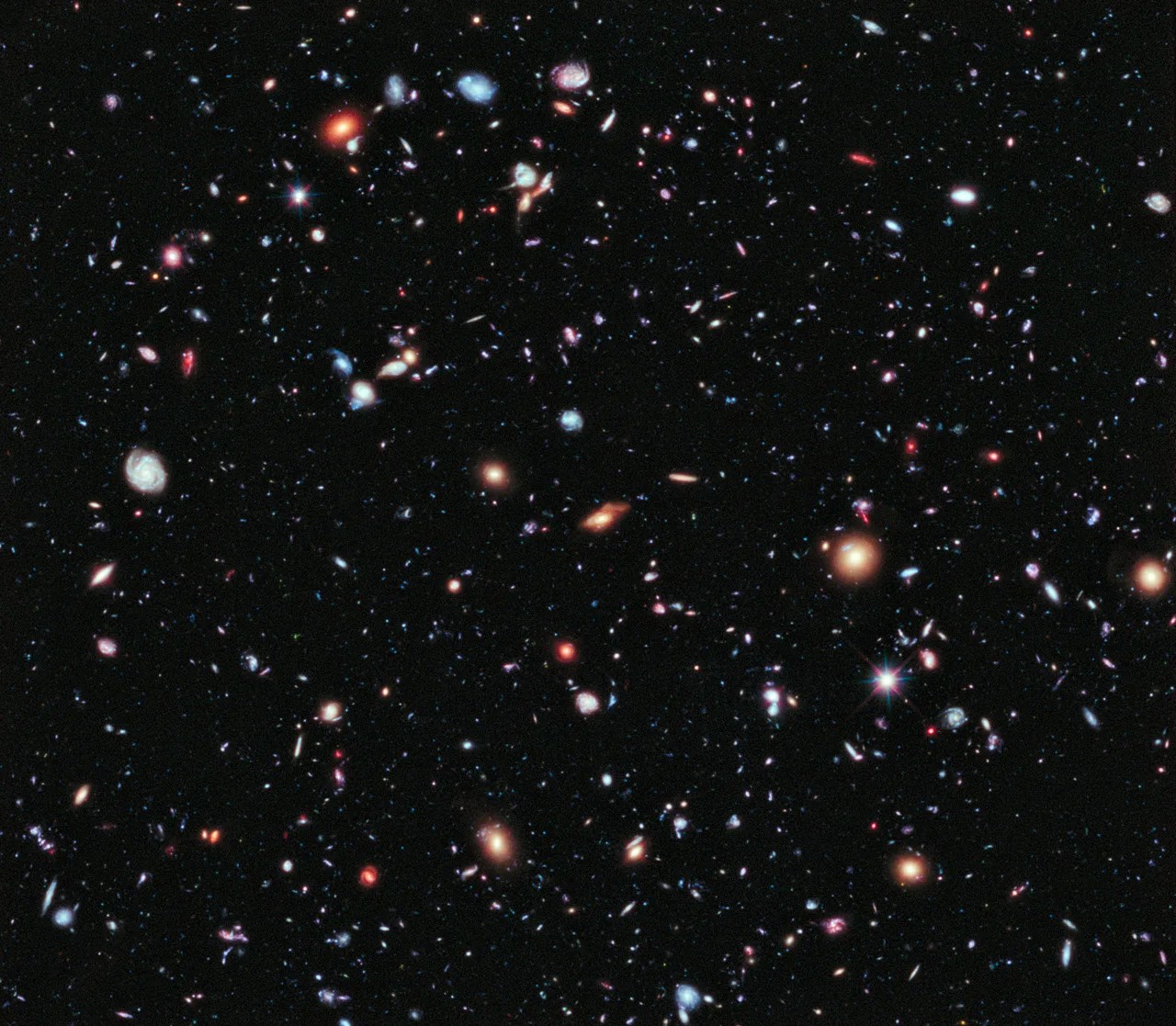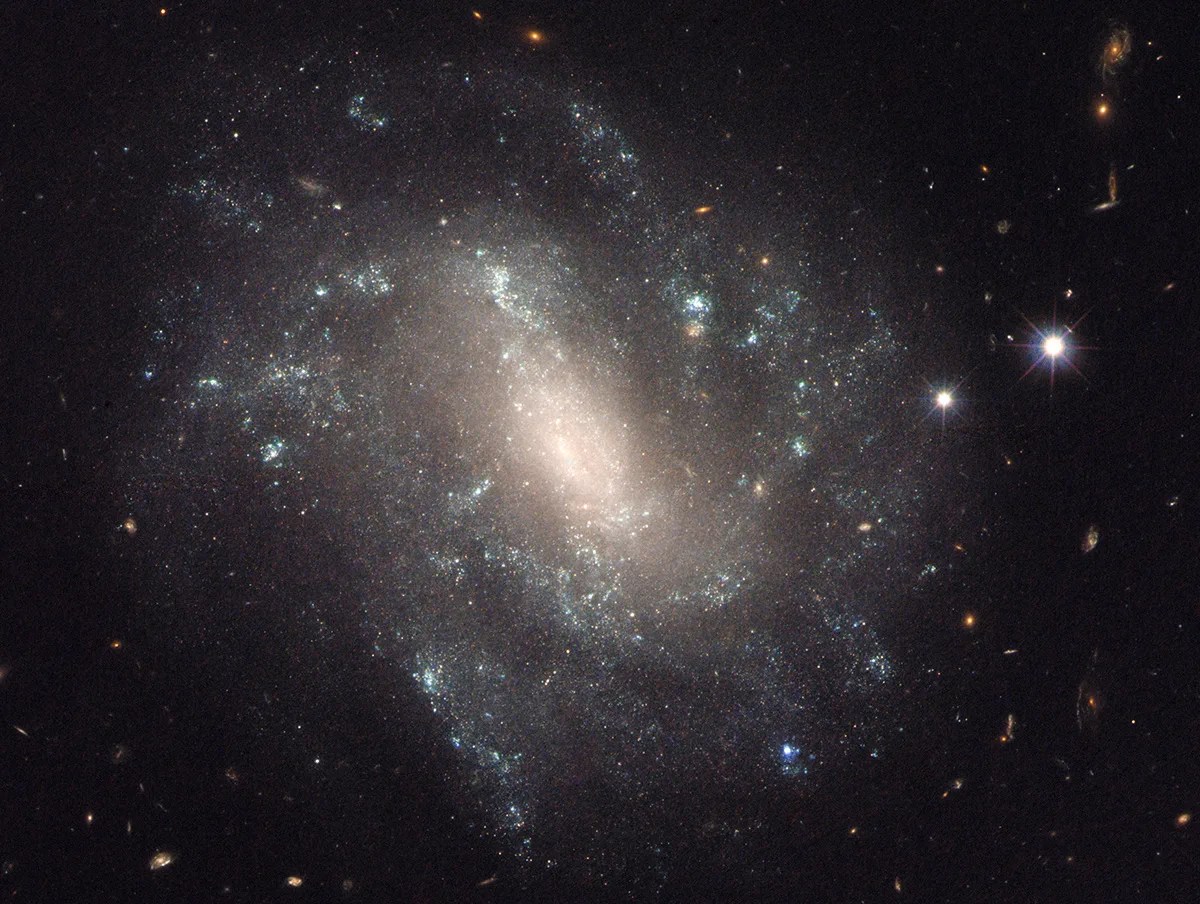When we look around at the universe, we see stars, planets, gas, and dust. Closer to home, we see continents, oceans, mountains, deserts, plants, people, and other living things. An unspeakably vast assortment of matter that we can see and touch, sprinkled throughout the emptiness of space.
But none of it is enough.
Gravity is the glue that holds the universe together, collecting stars into galaxies, keeping planets on track around their stars, and drawing galaxies together into mergers across space. The more mass something has, the greater its gravity. But scientists have calculated that all the matter we can see in the universe doesn’t add up to enough gravity to keep galaxies from flying apart, or to allow them to form in the first place. Something else must be out there.
We call this substance dark matter, an invisible form of matter that doesn’t emit, absorb or reflect light, or interact with normal matter. It’s theorized to make up 85 percent of the universe’s total mass, or almost 30 percent of the universe’s combined mass-energy.
No one knows exactly what dark matter is, but theories posit that it consists of currently unknown particles that rarely interact with normal matter.
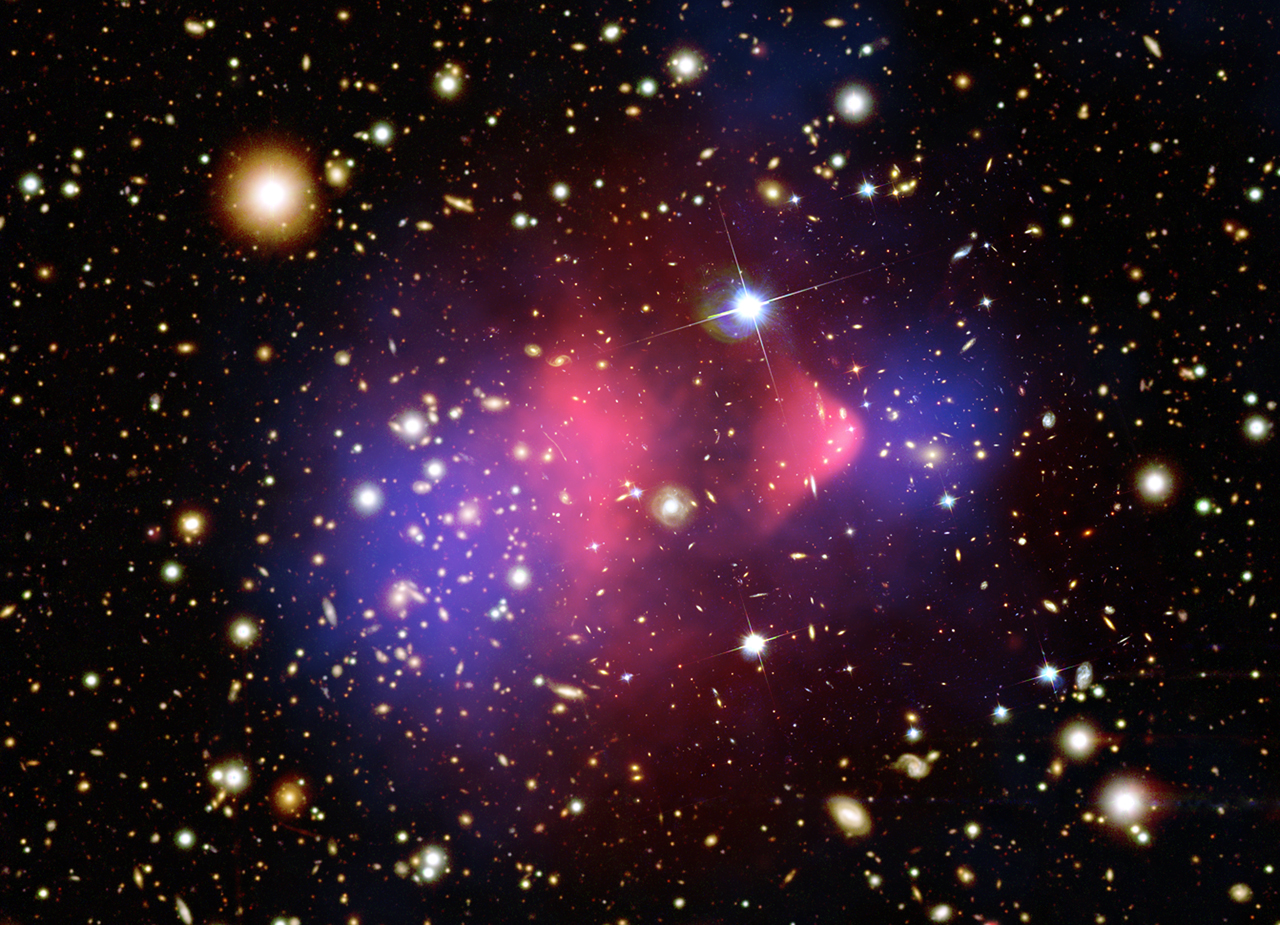
Dark matter is thought to be the scaffolding that normal matter arranges itself around and upon, a web woven through the universe whose gravity attracts normal matter. Hubble has played a major role in helping map the presence of dark matter throughout the cosmos, including the creation of a three-dimensional map that offered the first look at the web-like large-scale distribution of dark matter in the universe.

Starlight from galaxies, derived from observations by the Canada-France-Hawaii Telescope, is colored orange. The green-tinted regions show hot gas (detected by NASA's Chandra X-ray Observatory), which is evidence that a collision took place. The blue-colored areas pinpoint the location of most of the mass in the cluster, which is dominated by dark matter. The dark-matter map was derived from the Hubble observations by detecting how light from distant objects is distorted by the cluster of galaxies, an effect called gravitational lensing.
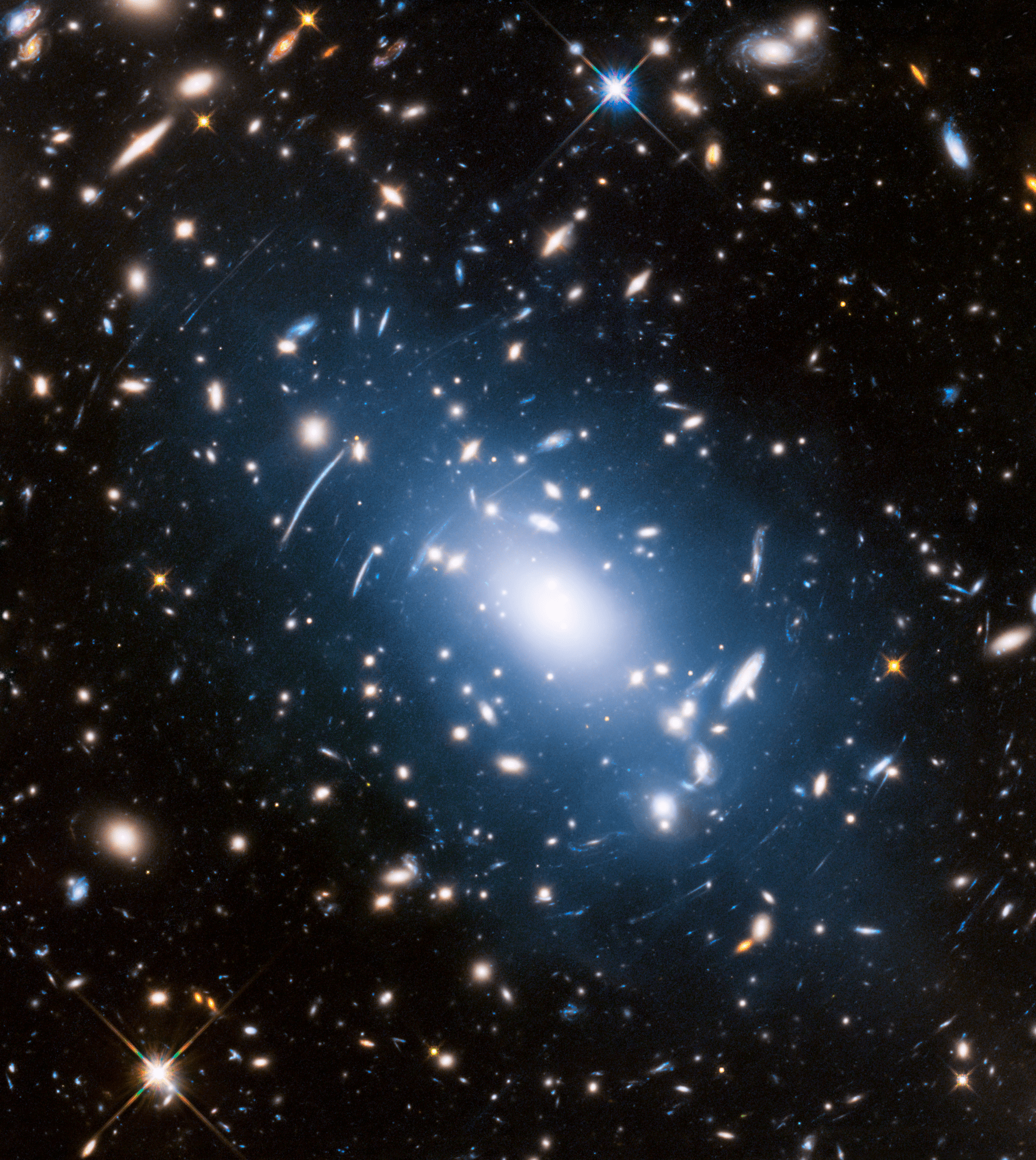
Because dark matter is invisible, scientists measure it by observing the way it affects visible matter. Astronomer Vera Rubin, known as the “mother of dark matter,” found that stars in the outer reaches of galaxies were moving at speeds similar to stars closer to the center, a result only possible if a huge amount of invisible matter was present in those outer regions. Hubble studies dark matter by observing the distorting and magnifying effects its gravity has on the light emanated by visible objects, a phenomenon called “gravitational lensing.”

Among other dark matter investigations, Hubble helped “weigh” our Milky Way galaxy to estimate its mass, most of which is locked up in dark matter. Hubble found that galaxies can be embedded in haloes of dark matter, and that dark matter can be forced away from galaxy clusters and separated from normal matter by galaxy collisions. It found the smallest clumps of dark matter known and strikingly concentrated clumps of dark matter.
Dark matter remains one of the universe’s most perplexing mysteries, but Hubble’s observations have provided compelling evidence for its existence and charted its effects. We may not be able to see dark matter, but thanks to Hubble we are navigating our way toward an understanding of this cosmic conundrum.


